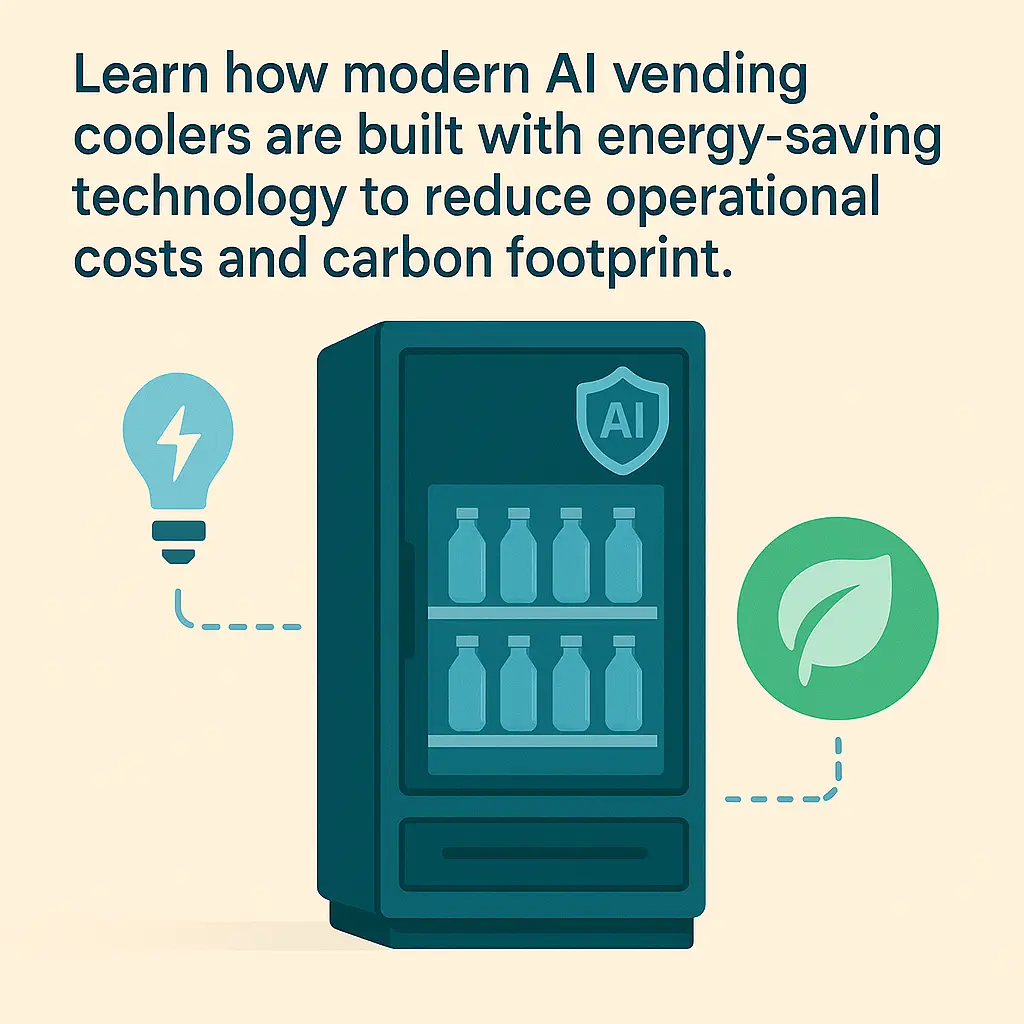Energy Efficiency of AI Vending Coolers
Learn how modern AI vending coolers are built with energy-saving technology to reduce operational costs and carbon footprint.
Back to AI Vending Coolers ResourcesLearn how modern AI vending coolers are built with energy-saving technology to reduce operational costs and carbon footprint.
Back to AI Vending Coolers ResourcesAI vending coolers use motion-based lighting, intelligent temperature regulation, and real-time inventory data to minimize energy waste. These innovations reduce both environmental impact and overall operating costs, making them a smart long-term investment for businesses.
![]() Smart sensors reduce compressor usage and cut electric costs
Smart sensors reduce compressor usage and cut electric costs
![]() Energy-efficient cooling maintains product freshness longer
Energy-efficient cooling maintains product freshness longer
![]() AI coolers lower carbon footprint with eco-intelligent designs
AI coolers lower carbon footprint with eco-intelligent designs

AI vending coolers are transforming the vending industry by pairing product access with smart, sustainable technology. Designed with energy conservation in mind, these next-generation coolers use intelligent features like motion sensors, adaptive LED lighting, and predictive cooling algorithms to significantly lower electricity consumption. Their efficiency isn't just about environmental impact—it’s about real savings for facilities that host them.
Traditional vending machines often run compressors constantly and lack intelligent lighting controls, leading to excess energy use. In contrast, AI-enabled coolers adapt their operations based on user interaction and time of day. For example, smart sensors can detect inactivity and dim interior lights or adjust cooling levels when foot traffic is low, minimizing unnecessary energy consumption.
Another important innovation is dynamic product monitoring. AI vending coolers track inventory levels in real time, eliminating the need for frequent manual restocking checks and opening of the door, which causes energy loss. This not only conserves power but also extends the operational life of the machine, further reducing total carbon footprint over time.
These energy-saving features make smart coolers especially popular in environmentally conscious workplaces, schools, and apartment buildings. Their low-maintenance operation appeals to property managers, while the sleek look and contactless payment options serve the modern consumer’s expectations.
Organizations that want to support sustainability goals while reducing utility expenses often consider AI vending as a practical addition. Plus, vendors offering these coolers typically handle all servicing and restocking—reducing the workload for office or facility managers as well.
Interested in vending solutions for educational campuses? Explore vending options that support student wellness and efficiency. Or if you're an HR manager seeking employee-centric amenities, see how office vending impacts team morale and retention.
If you're exploring vending options for your business, Vending Exchange can help simplify the process. Delivery, Installation and Equipment is provided at no cost to you - vendors provide the machines, keep them stocked, and handle all servicing. Whether you need a provider or full-service management, just fill out the form on this page to get started.
AI coolers reduce usage through features like motion-activated lighting, smart compressors, and temperature optimization that reacts to real-time demand.
Yes, smart vending coolers adjust operations to reduce waste, leading to noticeable savings on your facility’s electricity bill.
Many AI vending coolers come with integrated monitoring systems that allow vendors to track energy usage across time.
No, AI coolers balance energy savings with optimal product temperature to keep beverages and meals fresh.
Yes, reduced energy use and longer-lasting equipment mean fewer emissions and a lower carbon footprint overall.
Absolutely. AI vending coolers align with sustainability goals in LEED and energy-efficient environments.
They rely on user traffic data, temperature sensors, and product needs to activate only when necessary.
Most AI vending coolers use standard commercial-grade power outlets, requiring no special installations.
Savings vary, but businesses often report a 20–40% drop in electricity costs compared to older machines.
No, they often require less servicing thanks to smarter diagnostics and predictive maintenance features.